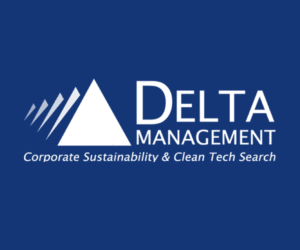Trying to reduce your exposure to PFAS or eliminate PFAS from your supply chain? What does PFAS-free really mean and what can you do?

Reducing PFAS exposure in consumer goods and supply chains is a growing priority—but what does “PFAS-free” actually mean? Emily Hicks, Co-Founder and Chief Operating Officer at FREDsense Technologies, unpacks the complexity behind PFAS definitions, the gaps in current testing and regulation, and the steps manufacturers and consumers can take to make more informed, science-based decisions in the face of these persistent “forever chemicals.”
The Growing Concern around PFAS and Their Applications
Per- and polyfluoroalkyl (PFAS) are becoming an increasingly important environmental concern. Often referred to in the media as ‘forever chemicals’, they’ve been the subject of many recent regulatory pushes around the globe. Discovered in the 1930’s, PFAS have been used in a host of applications. One of the primary uses has been firefighting foams where they have been heavily used due to their ability to put out fires extremely effectively. Outside of firefighting, PFAS have amazing chemical properties that make them extremely useful in may products we use on a daily basis. They’re extremely hydrophobic, making them fantastic as waterproofing agents and non-stick coatings. As such they’re found in many every day consumer products, from takeout containers to waterproof outerwear and cosmetics. They’ve also been used as additives in many manufacturing processes such as pulp and paper processing and semi-conductor manufacturing as well as medical devices.

“Despite the wide range of applications for PFAS, they also unfortunately pose serious risks to human health. They have been linked to reproductive and fertility issues, increased risk of cancers, negative impacts on the immune system, and developmental delays among many other serious conditions.”
Emily Hicks
Recent studies have suggested that while those who work directly with PFAS compounds (i.e. firefighters, manufacturers) have significantly higher levels of PFAS in their blood, virtually everyone has some level of PFAS circulating in their body. They are difficult to excrete or get rid of, meaning they stick around in the human body for long periods of time. They pose serious human health risks, but also risks to the greater environment and ecosystem. Given their extremely slow breakdown, PFAS are able to accumulate in water bodies, soils, biosolids and even in the air where they impact plants, animals, and microbes. We also know that PFAS are able to travel extremely long distances. Their presence has been recorded in extremely remote areas in the arctic and Antarctic, and they have been found to accumulate in polar bears and seals among many other species.
The Challenge of Defining PFAS-Free
Given the significant risk and recent attention towards PFAS, there has been momentum to get away from PFAS in our supply chains and limit our exposure. We’ve started to see the rise of a variety of PFAS-free products on the market. From feminine hygiene products, to yoga pants, ski wax and cookware, lots of goods now boast that they’re ‘PFAS-free’. This sounds great, but what does it actually mean?
Diving into it, there is not a lot of consensus on what PFAS-free means and it is a complicated issue. There are some standards beginning to emerge, but these are limited and often inadequate for several reasons. The first tricky part is that PFAS is not one compound, but rather represents a group of chemicals that we are only beginning to understand. In general, they have carbon chains with fluorine groups, but can have many different structures. Recent reports indicate that there could be upwards of 6 million unique PFAS, and this number is only growing. While Perfluorooctanoic Acid (PFOA) and Perfluorooctane Sulfonate (PFOS) are perhaps the best known PFAS, they represent only a fraction of the PFAS out there.
Making matters more complicated is the fact that PFAS analysis techniques are still being developed. Only last year did the US EPA finalize method 1633, which is the standard analysis method for PFAS in matrices other than clean drinking water. While the method underwent a tremendous amount of validation, it is a targeted method. This means that it only measures 40 PFAS of the potentially millions of types of PFAS, and it primarily focuses on longer chain PFAS and leaves out many of the shorter chains. While 1633 gives a snapshot of PFAS in a sample, it by no means gives the whole picture. Similarly, the EPA’s drinking water method, EPA 537.1, only looks at 18 analytes, a much smaller sliver of what is potentially out there. Now this would likely not be a problem if the ones covered were truly the most dangerous and concerning, but this is not quite the case.
Regulatory Gaps and the Shift to Shorter Chain PFAS
Now we’ve known for quite a long time that PFOA and PFOS posed risks and this was what led to regulatory action. Canada for example began to regulate these in 1999, along with other Long-chain perfluorocarboxylic acids (LC-PFCAs). Initially there was a belief that only the longer chain PFAS (more than 8 carbon atoms) were of tremendous concern to human health, and as such regulation often focused on these alone. The perhaps unintended consequence of this was that manufacturers simply switched to other, shorter chain PFAS. GenX and PFBS (perfluorobutane sulfonate), for example, were common replacements. While studies have shown that shorter chain PFAS don’t accumulate as readily as the longer chains, we now know that they still come with serious health implications. Shorter chain PFAS are associated with acute toxicity, and have been shown to cause oxidative damage, inflammation, and cellular dysfunction.

So, by switching from PFOA/PFOS to other compounds, we perhaps made a small risk reduction, but we definitely didn’t solve the problem. This also suggests that of the other 6 million PFAS out there, many of which we have not done thorough health assessments for, likely many of them are dangerous as well. So why aren’t we regulating more? If we now know that other PFAS pose significant concerns, what’s stopping us? There are many reasons but at least one of them comes down to our analytical shortcomings. In brief, you can’t regulate or enforce what you can’t measure. Most analytical approaches require certified reference standards for the analysis to be considered valid, and we don’t have these for many PFAS. This is likely one of the drivers behind more targeted regulation. And Canada is not alone in this. Japan only looks at PFOA/PFOS, while the US EPA looks at 6 specific analytes for drinking water.
Circling back, what does this mean for ‘PFAS-free’ products? Well for starters…
“…most things designated PFAS free are more likely to really be PFOA/PFOS-free rather than truly PFAS-free. There are also many products that perhaps have no intentional PFAS added to them, but likely have PFAS occurring due their raw materials, especially (unfortunately) if they come from recycled goods.”
Emily Hicks
So, if you want to remove PFAS from your supply chain, or from your daily life, what should we be pushing for?
Moving Towards Better Testing and Accountability in PFAS-Free Claims

The first piece is to embrace more ‘total’ methods when we look at PFAS. It’s not good enough to just be looking at PFOA/PFOS or the 40 compounds in EPA 1633, we need to be tapping into methods such as Total OrganoFluorine analysis (TOF) and field screening methods capable of seeing beyond a handful of targeted analytes. We also need to look at how manufacturers and retailers are supporting their PFAS-free claims. Do they have lab analysis available? Did they just test for PFOA or did they do a broader screen? We need to look for manufacturers that do frequent testing. Saying something is PFAS-free once doesn’t really give you the whole picture, especially as raw materials may change between production runs. Are they conducting batch tests on their components? How regularly? Finally, we should be cautious of ‘PFAS-replacements’. Are they simply PFOA-replacements? Is there any data available on their safety and is that data peer-reviewed? These are some of the key questions we need to be asking as we look to eliminate PFAS. Given the breadth of the PFAS problem, this is not likely a problem going away anytime soon, but it’s something that we need to start putting a lot more attention on for both our own health and that of the environments that we live in.














